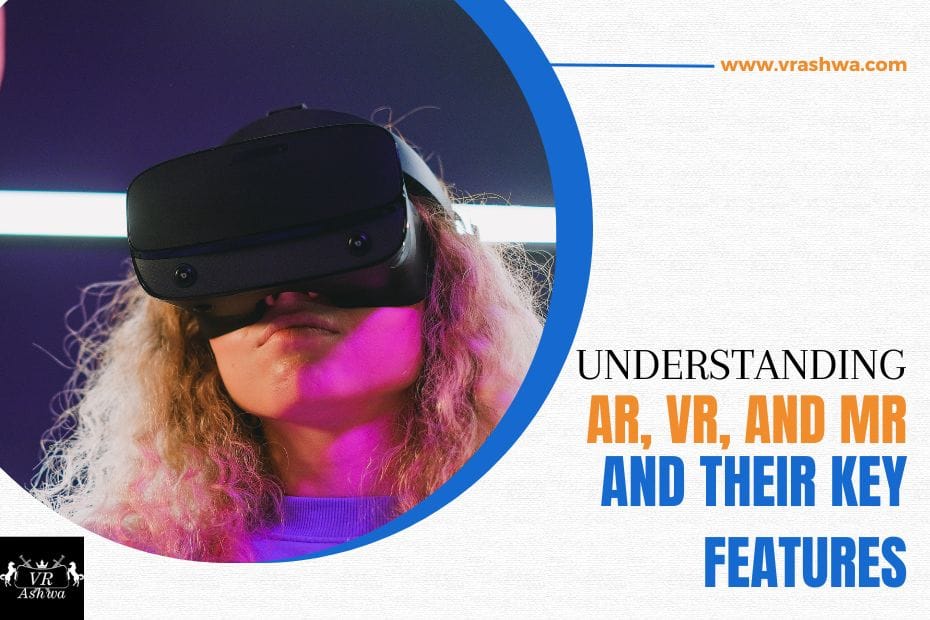In a world where technology continues to evolve, immersive technologies like AR, VR, and MR are changing how we interact with digital content. Have you ever played Pokemon Go and noticed virtual Pokemon characters appearing in your real-world surroundings? That’s AR, a technology that overlays digital elements on a view of the physical world.
But what about MR? It’s a step further, allowing physical and digital elements to interact. With MR, users can manipulate holographic objects in the physical world, like Microsoft’s HoloLens. It’s all thanks to advancements in computer vision, graphical processing, display technologies, input systems, and cloud computing.
Then there’s VR, which fully immerses users in a digital environment. Imagine being transported to another world, interacting with it using controllers or even hand tracking. That’s the power of VR, like with Oculus Quest.
These immersive technologies are becoming more prevalent in industries like healthcare, education, and manufacturing, whether for entertainment or practical purposes. They unlock natural and intuitive interactions, enhancing the immersive experience and making it feel more realistic.
So, are you ready to step into the world of AR, VR, and MR? Try them out for yourself and see how they can change your experience of digital content.
What are the Key Features of Mixed Reality (MR)
Imagine this – you’re standing in your living room, looking at a virtual object that appears to be right in front of you. As you move around the room, the object stays in place as if it’s there. You can reach out and touch it, and your hand goes right through it – but you can still feel a sense of weight and texture. That’s mixed reality, or MR for short.
Mixed reality combines the physical and digital worlds to create a new reality. It’s similar to virtual reality (VR) in that it involves immersive experiences, but it differs in that it allows for natural and intuitive interactions. With mixed reality, users can see and interact with virtual objects and environments as if they were part of the real world.
The technology behind mixed reality has come a long way in recent years, thanks to advancements in computer vision, graphical processing, display technologies, input systems, and cloud computing. These advancements have made it possible to create more realistic and interactive mixed-reality experiences than ever before.
One key feature of mixed reality is recognizing and tracking the user’s physical environment. This allows virtual objects to be placed and anchored in real-world locations, creating a seamless and natural experience. For example, in a mixed-reality game, virtual characters and objects can interact with real-world objects in your room, such as your couch or coffee table.
Another key feature of mixed reality is using natural gestures and movements to interact with virtual objects. For example, use hand gestures to manipulate objects or navigate a virtual environment instead of using a keyboard or controller. This creates a more immersive and intuitive experience, making it feel like you’re interacting with the virtual world.
What is the Importance of Haptic Feedback in Mixed Reality (MR)
Have you ever played a video game and wished you could feel what was happening on the screen? Well, with haptic feedback technology in mixed reality (MR), that dream is becoming a reality.
Haptic technology stimulates the senses of touch and motion to replicate sensations similar to those felt when handling objects in the real world. In MR, haptic feedback is used to enhance the immersive experience by making it feel more realistic. It makes users feel like they’re touching and interacting with virtual objects.
For example, imagine playing a mixed-reality game where you’re holding a virtual sword. With haptic feedback, the sword vibrates and gives resistance as you swing it, giving you a more realistic and immersive experience. Or, imagine reaching out to touch a virtual object and feeling a gentle vibration and pressure as your hand passes through it, giving you the sensation of actually touching something.
Haptic feedback can also be used to simulate different textures and sensations. For example, a mixed-reality experience might use haptic technology to simulate the feeling of sand or water as you move through a virtual environment.
How to Utilize Mixed Reality (MR) in the Manufacturing Sector
Have you ever wondered how mixed reality (MR) technology could be used in manufacturing? Well, I wonder no more because MR is already being utilized to revolutionize factories and other manufacturing workplaces.
One way in which MR can be used in manufacturing is by representing and treating large amounts of data. This allows engineers and manufacturers to identify problems and inefficiencies in the manufacturing process more quickly and easily. For example, MR applications can simulate a manufacturing plant and identify areas where the process can be improved. By making it easier to analyze data and identify areas for improvement, MR can help to increase efficiency and reduce waste in the manufacturing process.
Another way MR can be used in manufacturing is by creating signs and instructions for employees to follow. In factories and other workplaces, safety is of the utmost importance. MR applications can create virtual signs and instructions that employees can follow to ensure safety. For example, employees can wear MR glasses or headsets that display virtual signs and instructions to guide them through manufacturing, reducing the risk of accidents and injuries.
But that’s not all – MR can also be used to train employees. For example, in the automotive industry, MR can be used to simulate the assembly of a car, allowing employees to practice and perfect their skills in a safe, virtual environment before working with real components.
Conclusion
In conclusion, augmented reality (AR), virtual reality (VR), and mixed reality (MR) are all immersive technologies that are changing the way we interact with digital content. Each technology has unique features and benefits that can be utilized in different industries, from manufacturing and healthcare to entertainment.
AR enhances the real world by overlaying digital content, while VR offers a fully immersive experience that can transport users to new worlds and environments. MR, on the other hand, blends the physical and digital worlds, allowing for natural and intuitive interactions.
In the manufacturing sector, MR can represent and analyze large amounts of data, create signs and instructions for employees, and even train workers. In healthcare, AR can assist surgeons during procedures, while VR can help patients overcome phobias and anxiety. And in entertainment, VR and AR can be used to create immersive experiences that transport users to new worlds and environments.
Overall, AR, VR, and MR are innovative technologies with incredible potential to transform many industries. By taking advantage of these technologies, businesses and organizations can increase efficiency, safety, and productivity while providing users with a more engaging and interactive experience. So why explore the possibilities of immersive technology and see what it can do for you?

